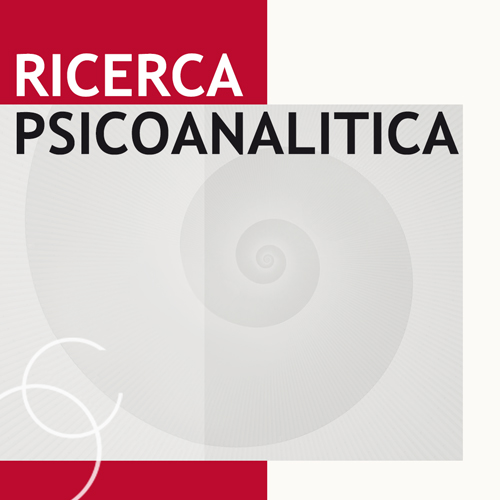Cicogne tecnologiche: genitori e figli nati dalla scienza!

All claims expressed in this article are solely those of the authors and do not necessarily represent those of their affiliated organizations, or those of the publisher, the editors and the reviewers. Any product that may be evaluated in this article or claim that may be made by its manufacturer is not guaranteed or endorsed by the publisher.
Le nuove tecnologie riproduttive inevitabilmente impongono rilevanti trasformazioni valoriali, culturali e relazionali del concetto di genitorialità e in senso più ampio di famiglia. La scissione tra genitorialità biologica e genitorialità sociale sollecita numerosi riflessioni. Il presente lavoro, affronta il tema della donazione di gameti e il bisogno di accogliere "l'intruso" che rivendica e si appropria di una cittadinanza che non è solo corporea o ascrivibile al mondo femminile bensì è una questione della coppia.
Blake, L., Casey, J., Readings, V., Jadva, V., & Golombok, S. (2010). "Daddy ran out of tadpoles": how parents tell their children that they are donor conceived, and what their 7-years-olds under stand. Human Reproduction, 25(10), 2527-2534. DOI: https://doi.org/10.1093/humrep/deq208
Blake, L., Casey, J., Jadva, V., & Golombok, S. (2011). Secrecy, disclosure and everything in-between: decisions of parents of children conceived by donor insemination, egg donation and surrogacy. Reproductive Biomedicine Online, 22(5), 485-495. DOI: https://doi.org/10.1016/j.rbmo.2011.01.014
Castelli-Gattinara, P., Ardovini, C., Costantini, E., Morganti, G., & Onofri, A. (2005), I trapianti d"organo nella prospettiva cognitivo-evoluzionista. Psicobiettivo-Trapianti e Psicoterapia, XXV(3), 16-38.
Chatel, M.M. (1995). Il disagio della procreazione. Milano: Il Saggiatore.
Domar, A.D., Zuttermeister, P.C., & Friedman, R. (1993). The psychological impact of infertility, a comparison. Journal Psychosomatic Obstetrician Gynecology, 14(Suppl), 45-52.
Dotti, M. (2017). Bauman: "La felicità è la risposta a ciò che ci consuma" [Intervista]. Vita International; 10 Gennaio. Retrived at: http://www.vita.it/it/article/2017/01/10/baumanla-felicita-e-la-risposta-a-cio-che-ci-consuma/142082/
Dunkel-Schetter, C., & Lobel, M. (1991). Psychological reactions to infertility. In A.L. Stanton, C. Dunkel-Schetter (Eds.), Infertility: Perspectives from stress and coping research (pp. 29-57). New York, NY: Springer US. doi:10.1007/978-1-4899-0753-0. DOI: https://doi.org/10.1007/978-1-4899-0753-0
Ethics Committee of the American Society for Reproductive Medicine. (2004). Informing offspring of their conception by gamete donation. Fertility and Sterility, 81(3), 527-531. DOI: https://doi.org/10.1016/j.fertnstert.2003.11.011
Faccio, E. (2007). Le identità corporee. Firenze: Giunti.
Fiumanò, M. (2000). A ognuna il suo bambino. Milano: Pratiche Editrice.
Greil, A.L. (1991). Not yet pregnant: infertile couples in contemporary America. New Brunswick: Rutgers University Press.
Hammanerg, K., & Astbury, J. (2001). Women"s experice of IVF: a follow-up study. Human Reproduction, 16(2), 374-83. doi: 10.1093/humrep/16.2.374. DOI: https://doi.org/10.1093/humrep/16.2.374
Higgins, E.T., Klein, R.L., & Strauman, T.J. (1987). Self-discrepancies: distinguishing among self-states, self-state conflicts, and emotional vulnerabilities. In K. Yardley & T. Honess (Eds.), Self and identity: psychosocial perspectives (pp. 173-186). John Wiley & Sons.
Imrie, S., Vasanti, J., & Golombok, S. (2012). Centre for family research. Cambridge, UK: University of Cambridge.
Lycett, E., Daniels, K., Curson, R., & Golombok, S. (2005). School-aged children of donor insemination: a study of parents"disclosure patterns. Human Reproduction, 20(3), 810-819. DOI: https://doi.org/10.1093/humrep/deh703
Mahlstedt, P.P. (1985). The psycological components of infertility. Fertility and Sterility, 43, 335-346. DOI: https://doi.org/10.1016/S0015-0282(16)48428-1
Miall, C.E. (1985). Perceptions of informal sanctioning and the stigma of involuntary childlessness. Deviant Behavior, 6(4), 383-403. doi:10.1080/01639625.1985.9967686. DOI: https://doi.org/10.1080/01639625.1985.9967686
Ministero della Salute. (2014). Relazione del Ministro della Salute al parlamento sullo stato di attuazione della legge contenente norme in materia di procreazione medicalmente assistita (legge 19 febbraio 2004, n. 40, articolo 15).
Minolli, M. (2009). Psicoanalisi della relazione Milano: FrancoAngeli.
Nancy, J.-L. (1996). Essere singolare plurale. Torino: Einaudi.
Nancy, J.-L. (2000). l'Intruso. Napoli: Cronopio Edizioni.
Nesci, D.A. (2007). Libere associazioni in margine al lavoro di Andrea Sabbadini sul replacement child. Doppio Sogno, n.5, Dicembre 2007. Retrived at: http://www.doppiosogno.it/numero5/ita/notenesci.pdf
Peterson, B.D., Newton, C.R., Rosen, K.H., & Skaggs, G.E. (2006). Gender differences in how men and women who are referred for IVF cope with infertility stress. Human Reproduction, 21(9), 2443-2449. DOI: https://doi.org/10.1093/humrep/del145
Rumball, A., & Adair, V. (1999). Telling the story: parents" scripts for donor offspring. Human Reproduction, 14, 1392-1399. DOI: https://doi.org/10.1093/humrep/14.5.1392
Valentini, C. (2004). La fecondazione proibita. Milano: Feltrinelli.
PAGEPress has chosen to apply the Creative Commons Attribution NonCommercial 4.0 International License (CC BY-NC 4.0) to all manuscripts to be published.


 https://doi.org/10.4081/rp.2021.435
https://doi.org/10.4081/rp.2021.435





